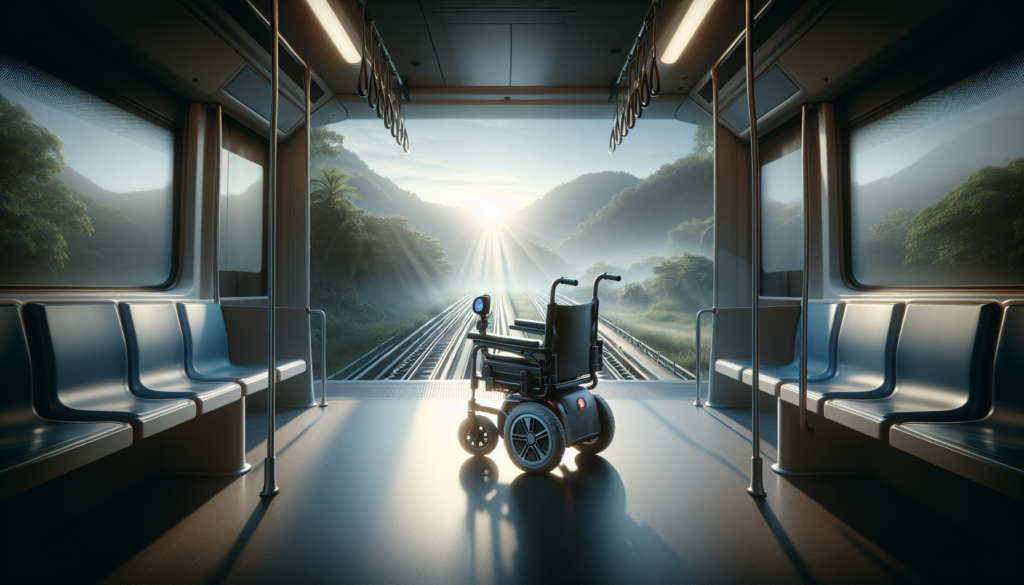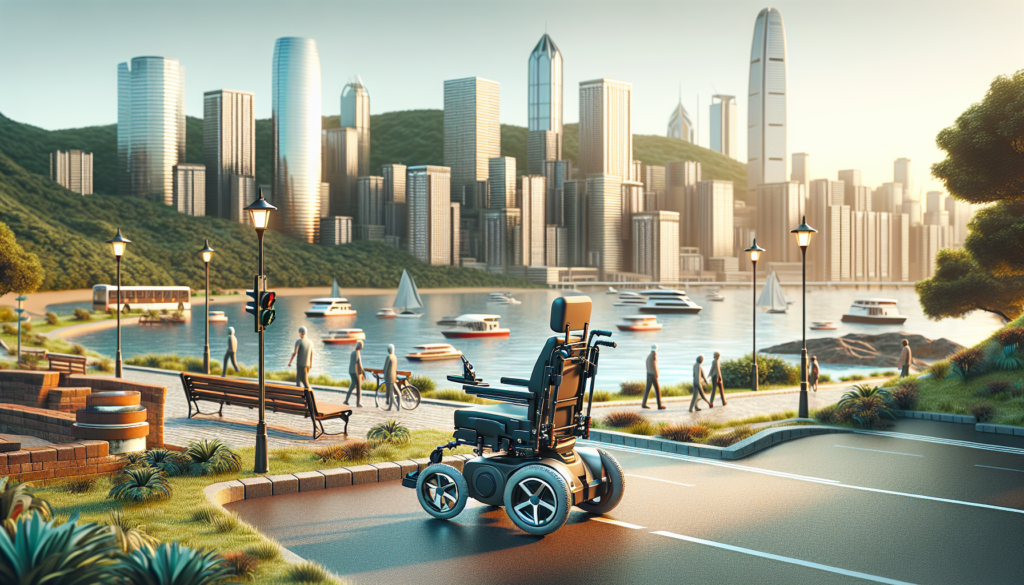
As the demand for electric wheelchairs continues to rise, understanding the technology behind their power sources becomes essential for consumers. Among the key features to consider are the types of batteries used to power these mobility devices. In this article by EKO Life MY, we will explore the differences between lithium-ion batteries and lead-acid batteries, focusing on their performance, range, and charging capabilities in electric wheelchairs. This information is crucial for anyone contemplating which type of electric wheelchair best suits their needs, whether it’s the lightweight and efficient Edegree EW6 or the more robust and economical Edegree EW1.
Comparative Overview: Lithium Ion vs Lead Acid Batteries
When it comes to electric wheelchairs, the choice of battery plays a vital role in determining performance and mobility. Lithium-ion batteries, as seen in the Edegree EW6, offer an impressive range of 10-15 km per charge, making them suitable for daily use. Weighing only 14.8 kg with the battery included, they are lightweight and easier to handle.
Additionally, lithium-ion batteries have a fast charging time of 6-8 hours, ensuring that users spend less time waiting for their mobility aids to be ready. With a robust dual motor system and a 24V lithium battery, the Edegree EW6 provides a smooth ride with a maximum load capacity of 100 kg, catering effectively to various user needs. The climbing ability of up to 10 degrees and 5-speed modes enhance the overall versatility of this wheelchair.
On the other hand, lead-acid batteries, as demonstrated by the Edegree EW1, are often more affordable, with a price point of RM 2,499. They deliver a decent range of 20 km but are heavier, weighing 38 kg, which can limit mobility for some users. While they also support a 100 kg maximum load and share similar speed and climbing capabilities, their 6-hour charging time is slightly better than lithium-ion alternatives. However, due to their bulkier nature and shorter lifespan compared to lithium-ion batteries, lead-acid batteries may not be the best long-term investment for electric wheelchair users seeking optimal performance and ease of use.
Performance Metrics: Range and Charging Time
When evaluating electric wheelchairs, performance metrics such as range and charging time are crucial for users seeking efficiency and reliability. The Edegree EW6 with its lithium battery offers a range of 10-15 km on a single charge, which is ideal for short trips around the community or home. It requires a charging time of 6-8 hours, providing a balance between usage and downtime. On the other hand, the Edegree EW1, powered by a lead-acid battery, boasts a longer range of 20 km per charge. This extended range is particularly advantageous for those who may need to travel further without frequent recharging, and it charges in just 6 hours.
However, the heavier lead-acid battery comes with a weight of 38 kg compared to the EW6’s weight of 14.8 kg, which could influence maneuverability and transport options. In summary, while the Edegree EW6’s lithium battery makes it lighter and more compact, it does offer a slightly lesser range. Conversely, the Edegree EW1 emphasizes a greater travel distance due to its lead-acid battery but at the cost of increased weight. Evaluating these performance metrics thoroughly helps potential buyers identify which electric wheelchair best suits their mobility needs and lifestyle preferences.
Weight and Portability Considerations
When considering electric wheelchairs, weight and portability are crucial factors that can significantly influence a user’s experience. The Edegree EW6, equipped with a lithium battery, weighs just 14.8kg, making it one of the lighter options available. This reduced weight directly contributes to its portability, allowing users to easily transport the wheelchair whether it be in a car or during travel. In contrast, the Edegree EW1, which uses a lead-acid battery, weighs considerably more at 38kg. This heavier design may limit its maneuverability and ease of transport, posing a potential challenge for users who intend to take their wheelchair on various journeys.
The weight disparity between these two models highlights the pivotal role battery type plays in the overall design of electric wheelchairs. Furthermore, lithium batteries, such as the one found in the Edegree EW6, offer not just a lighter weight but also a higher energy density compared to lead-acid batteries used in the Edegree EW1. This means that users of the EW6 benefit from better lightweight performance without sacrificing essential features or range.
While both models can support a maximum load of 100kg, the decreased weight of the EW6 enhances its appeal for those seeking a portable solution. Ultimately, selecting the right battery type is crucial, as it greatly impacts the weight and overall usability of the electric wheelchair, leading to improved mobility for the user.
Cost Analysis: Long-term Investment and Initial Pricing

When evaluating electric wheelchairs, one of the key factors to consider is the cost analysis of their battery types, particularly lithium-ion and lead-acid batteries. The Edegree EW1 electric wheelchair, powered by a lead-acid battery, is priced at RM 2,499. Although this model is more affordable upfront, it has a shorter range per charge of 20 km and a heavier weight of 38 kg, affecting its portability and convenience.
On the other hand, the Edegree EW6, equipped with a lithium battery, comes at a higher cost of RM 4,388 but promises a compact design weighing just 14.8 kg and an effective range of 10-15 km. The initial investment might be steeper with the lithium version, but considering the reduced weight which enhances mobility, it can be worth the higher price for many users. Furthermore, the longevity and performance of these batteries play a crucial role in the long-term cost evaluation. Lead-acid batteries, while cheaper, typically require more frequent replacements and maintenance, which can drive up overall costs.
In contrast, lithium-ion batteries, like those used in the Edegree EW6, offer lower maintenance and a longer lifespan, making them a more economical choice in the long run. This balance between initial pricing and long-term investment is essential for consumers looking to enhance their mobility with an electric wheelchair, ensuring they choose the option that best meets their financial and functional needs.
Maintenance and Lifespan: What to Expect
When choosing an electric wheelchair, understanding the maintenance and lifespan of the batteries can significantly impact your overall experience and value for money. Lithium-ion batteries, like the ones used in the Edegree EW6, typically offer an impressive longevity of around 2-4 years, assuming proper care. With a smaller size of 24V 10AH, they are lighter, which contributes to a more convenient design, making mobility easier. In contrast, lead-acid batteries, such as those in the Edegree EW1, may last about 1-3 years but weigh considerably more at 38 kg, impacting the overall portability of the wheelchair.
Furthermore, lithium-ion batteries require less frequent maintenance and can handle more charge cycles than their lead-acid counterparts, providing a better performance in the long run. The charging time for lithium-ion batteries is generally similar to that of lead-acid batteries—around 6 to 8 hours—but lithium options tend to charge more efficiently. Additionally, lithium batteries have a quick recharge capability, making them ideal for users who require regular, reliable use. Understanding these differences can help users choose the right electric wheelchair to fit their needs and priorities, ensuring a smoother journey ahead.
User Experience: Speed and Climbing Ability
When it comes to electric wheelchairs, user experience often hinges on speed and climbing ability, two features that directly impact mobility for the user. The Edegree EW6, equipped with a dual motor 24V 190W brushless motor, offers a forward speed of up to 8 km/h, providing a more dynamic and agile experience compared to the Edegree EW1, which reaches a maximum forward speed of 6 km/h with its dual motor 24V 250W setup. Despite having a slightly lower speed, the EW1 can handle a climbing ability of 13° degrees, which is an advantage for navigating inclines.
In contrast, the EW6 can climb at angles under 10°, meaning it may be less capable on steeper paths but compensates with better speed and efficiency over flat terrains. In terms of weight, the EW6 weighs 14.8 kg, making it a lighter option for transportation and maneuverability, especially when compared to the bulkier EW1 at 38 kg. While both models are designed to support a maximum load of 100 kg, the lower weight of the EW6 enhances the overall user experience through easier handling. These factors, combined with their respective battery types and charging times, further define the day-to-day practicality of each wheelchair, ultimately shaping users’ preferences based on their unique mobility needs.
Choosing the Right Electric Wheelchair for Your Needs
When it comes to selecting the right electric wheelchair, one of the crucial factors to consider is the type of battery powering the device. Electric wheelchairs equipped with lithium-ion batteries, like the Edegree EW6, offer a range of 10-15 km per charge and recharge within 6 to 8 hours. These batteries are lightweight, which is beneficial for portability, and enable a maximum load of 100 kg while providing a smoother and more efficient performance with their dual motor setup. Although the Edegree EW6 is pricier at RM 4,388, the benefits of a lithium-ion battery—like better energy efficiency and a longer lifespan—often outweigh the initial cost for many users seeking reliable mobility solutions.
On the other hand, the Edegree EW1 features a lead-acid battery, which provides a longer range per charge of 20 km and has a significantly lower purchase price of RM 2,499. Although it comes with a heavier weight of 38 kg, its dual motor 24v250w design allows for a climbing ability of up to 13°. While lead-acid batteries might be less efficient, they can offer a more economical option for those on a budget. Ultimately, the choice between lithium-ion and lead-acid batteries comes down to individual needs, considering factors such as budget, weight capacity, and desired range.
Final Thoughts on Battery Choices for Electric Wheelchairs

Choosing the right battery for your electric wheelchair is crucial for ensuring your mobility and independence. Lithium-ion batteries, like those found in the Edegree EW6, offer significant advantages in range and weight, making them ideal for active users who require a longer distance per charge and lighter equipment. With a range of 10-15km and a weight of only 14.8kg, lithium batteries not only provide efficient energy usage but also enhance the overall user experience by allowing for quicker travel and easier navigation. However, they do come at a higher price point of RM 4,388, which might be a consideration for those on a budget.
On the other hand, lead-acid batteries, exemplified by the Edegree EW1, offer a more budget-friendly alternative starting at RM 2,499, albeit with a shorter range of about 20km and increased weight at 38kg. While they may have lower efficiency compared to their lithium counterparts, they still deliver reliable performance and can handle climbing inclines up to 13°. Ultimately, the best choice for you depends on your specific needs, including distance requirements, weight preferences, and budget constraints. By assessing these factors, you can choose the best electric wheelchair battery to suit your lifestyle and mobility needs.

The comparison is quite detailed and informative, however, it would be great to see more discussion on the durability of the lithium-ion batteries, considering they have a longer lifespan.
Thank you for your comment, Yves Ang. We apologize for any oversight and would be happy to discuss further on the durability of lithium-ion batteries. While it’s true that lithium-ion batteries have a longer lifespan and are more efficient, their internal components can be susceptible to degradation over time, which may affect their overall performance. However, high-quality lithium-ion batteries designed for mobility aids like electric wheelchairs often come with built-in protection mechanisms to minimize such effects. We can offer more insight if you’d like, or you can reach out to us directly via [email protected] or +60 3-7890 3042 for a more detailed discussion.
I’m surprised that lead-acid batteries have a longer range, but I suppose it’s at the cost of weight. Can we see some real-world examples of users who have switched from lead-acid to lithium-ion batteries?
Dear Fauziah Wong, thank you for sharing your thoughts on the comparison between lithium-ion and lead-acid batteries. I understand your surprise at the longer range of lead-acid batteries, but you’re right that it comes with a weight penalty. We have had many customers who have switched from lead-acid to lithium-ion batteries, and the feedback has been positive. They appreciate the improved efficiency, portability, and longer lifespan that lithium-ion batteries offer. However, we also recognize that lead-acid batteries can be more affordable upfront, and we’re working to make our lithium-ion batteries more accessible to a wider range of customers. If you’d like to share your specific needs and budget, our team would be happy to help you determine the best option for you. Please feel free to contact us at [email protected] or +60 3-7890 3042.
I think the blog missed a crucial factor: the impact of lithium-ion batteries on the environment. They may have a longer lifespan, but do they contribute to electronic waste when they eventually need to be replaced?
Thank you, Kaviar Singh, for bringing up a crucial point. You are right, lithium-ion batteries do have an environmental impact when they eventually need to be replaced. At Eko Life Malaysia, we strive to promote sustainable and eco-friendly practices. We encourage our customers to consider recycling options for their lithium-ion batteries when they reach the end of their lifespan. Please feel free to reach out to us at [email protected] or +60 3-7890 3042 to discuss more about our sustainable practices and recycling options.